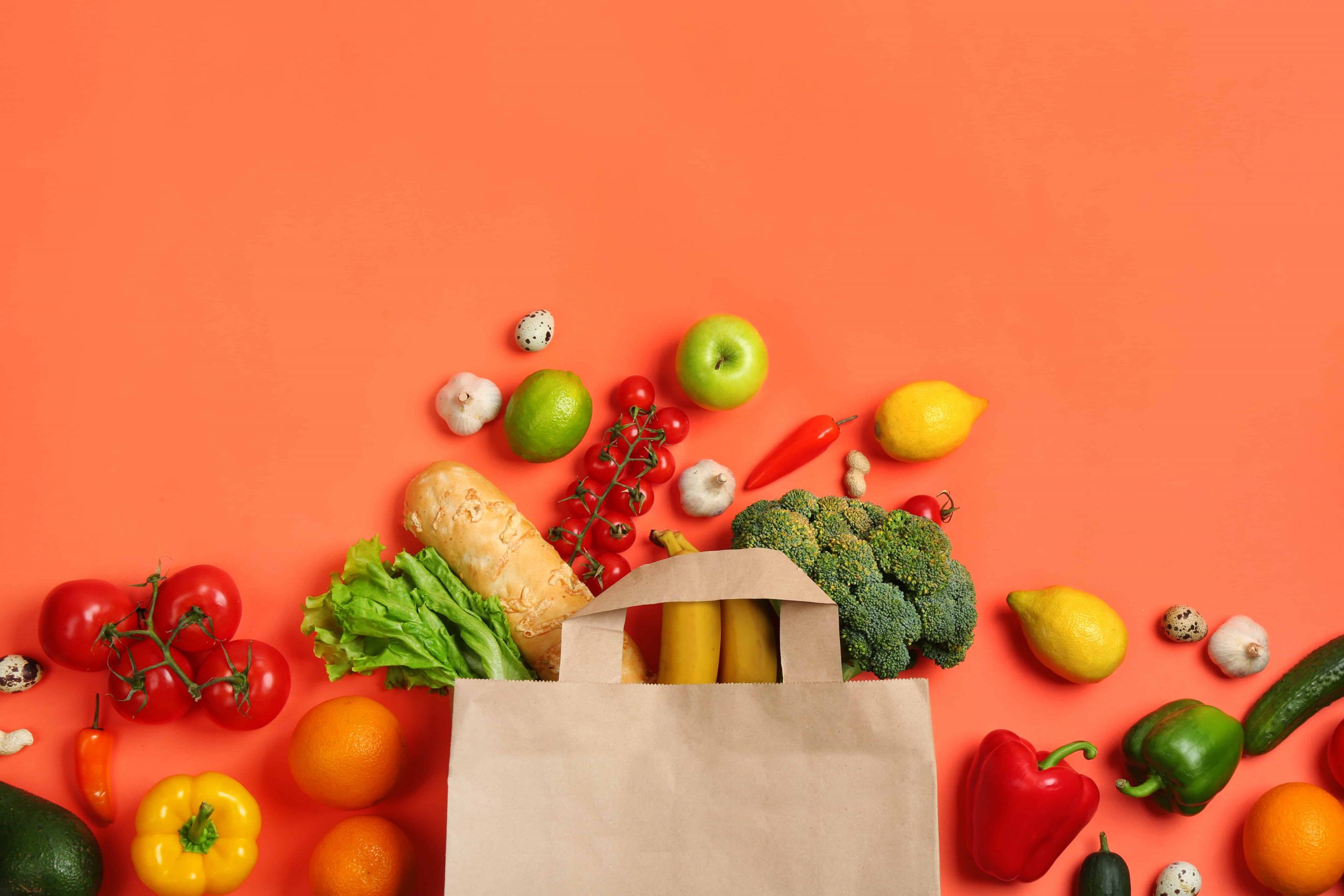It is common for some people to struggle with paying for their groceries. Thankfully, the federal government recognizes this problem and knows that it is an issue for many U.S. citizens. For this reason, the government has created a number of food assistance programs that are incredibly helpful. One of these programs is the Commodity Supplemental Food Program (CSFP). Unfortunately, not many Americans know about this program. They also don’t know how to get this kind of help. This article will tell you all you need to know about the Commodity Supplemental Food Program.
The Commodity Supplemental Food Program (CSFP) Explained
The main recipients of CSFP support are elderly citizens who are 60 years old and older. These citizens struggle with low levels of income. Through healthy food items from the United States Department of Agriculture (USDA), the CSFP goal is to boost the recipients’ diets by adding nutritional value. States that take part in this program (along with Indian Tribal Organizations) receive their funds and food from the USDA. It is worth mentioning that the program is managed by the federal government, specifically by the Food and Nutrition Service (FNS) which is an agency of the USDA. Moreover, CSFP was established in 1973 and is run under the Agriculture and Consumer Protection Act.
CSFP Assistance
The CSFP food packages are not enough to fulfill a full diet plan. However, it still provides a lot of help. How does it do that? Simply put, it offers supplemental assistance to eligible applicants. In fact, many citizens receive support from this program. The program assists an average of 676,000 recipients each month in a fiscal year.
The CSFP food packages include a variety of food items. These items can be:
- Canned vegetables
- Non-fat dairy milk
- Canned fruits
- Ultra high-temperature fluid milk
- Poultry
- Juice
- Canned meat
- Grains
- Dry beans
- Ready-to-eat cereal
- Peanut butter
CSFP Availability in Each State
You might find yourself asking: “Is CSFP available in every state?” The answer is yes! The CSFP program is available in all 50 states. It is also available in Indian Tribal Organizations (ITOs), and U.S. territories like the District of Columbia, and Puerto Rico. However, there are specific ITOs allowed to use this program. These ITOs include:
- Spirit Lake Sioux Tribe (ND)
- Oglala Sioux (SD)
- Shingle Springs Band of Miwok Indians (CA)
- Red Lake (MN)
- Seminole Nation (OK)
Be mindful of the fact that states have the choice to come up with their own residency criteria. These will depend on the designated service area. However, they cannot impose a minimum requirement for the period of residency. Some states may require that the applicants for CSFP be at nutritional risk which can be decided by a doctor or local agency staff.
In Case You Need More Information
Your CSFP state agency will be your go-to place whenever you need to get more information about the program. It is also where you can start with your application process to receive assistance.
Other Food Assistance Programs
While CSFP may be of great help to those who need it, there are also alternative food assistance programs. Here are some of them:
- Disaster Supplemental Nutrition Assistance Program (D-SNAP)
- Supplemental Nutrition Assistance Program (SNAP)
- Special Supplemental Nutrition Program for Women, Infants, and Children (WIC)
Disaster Supplemental Nutrition Assistance Program (D-SNAP)
The goal behind D-SNAP is to provide assistance to eligible households that are struggling with food loss or damage after a natural disaster. It is worth mentioning that not all states can manage this program. This is due to the fact that the president of the United States must provide the state with an Individual Assistance declaration. After receiving this declaration, the state will still need to contact the FNS for approval. Approval is a must in order to manage and run D-SNAP.
In states that have received their final approval, eligible applicants are given an Electronic Benefit Transfer (EBT) card. Just like SNAP, the recipient will use this card to cover some of their grocery costs. Similarly, the card is filled with cash that can be used at stores that accept the EBT card. However, it can only be used to purchase food items that qualify for the D-SNAP program. Due to the fact that this program has been created specifically to help those dealing with a disaster, the requirements are based on this kind of event. Individuals are deemed eligible if they are struggling with disaster-related costs. These costs include:
- Limited or low-level income due to the disaster for a good portion of the benefit period
- Business repairs
- Funeral costs
- Home repairs
- Personal injury costs
- Temporary shelter costs
- Relocation costs
- Evacuation costs
For applications, details, and any further information, make sure to get in touch with your state agency. They can also help you learn about eligibility requirements and the application process.
Supplemental Nutrition Assistance Program
SNAP is also a common nutrition assistance program. It offers help to individuals by covering part of their grocery expenses. How does it work? The SNAP program gives Electronic Benefit Transfer (EBT) cards to qualified recipients. After that, the EBT cards get funds every month. These funds can be used at qualified grocery stores. Moreover, the amount added to the EBT card each month is decided based on many factors such as family size and income level. During the period of Oct. 1, 2023, to Sept. 30, 2024, here are the maximum benefits of SNAP:
- A household of 1 member receives $291
- A household of 2 members receives $535
- A household of 3 members receives $766
- A household of 4 members receives $973
- A household of 5 members receives $1,155
- A household of 6 members receives $1,386
- A household of 7 members receives $1,532
- A household of 8 members receives $1,751
- For every extra person after a household of 8, $219 is given
You should know that the above-listed maximum benefit amounts are valid in households that are in 48 contiguous states and the District of Columbia. The following areas will have different maximum benefit amounts:
- U.S. Virgin Islands
- Alaska
- Guam
- Hawaii
If you wish to learn more about SNAP, make sure to contact your state SNAP office.
Special Supplemental Nutrition Program for Women, Infants, and Children (WIC)
Just like CSFP, the Special Supplemental Nutrition Program for Women, Infants, and Children (WIC) also targets a specific group of citizens. This group includes qualifying low-income individuals who are facing nutritional risk. These eligible recipients include:
- Children who are under 5 years old
- Pregnant women (throughout their pregnancy and 6 weeks after they give birth or their pregnancy is over)
- Infants who are under 1 year old
- Breastfeeding women until their baby turns 1 year old
- Women who are not breastfeeding for up to 6 months after they give birth or their pregnancy is over
Luckily, eligible recipients can receive benefits in many forms. These include social services, supplemental nutritious foods, welfare services, healthcare screenings, and access to healthcare referrals among other services. This is a federal program that is provided by the Food and Nutrition Service (FNS). However, it is managed and run by 89 WIC state agencies with about 47,000 authorized retailers. For more details and information, get in touch with your state or local agency to create an appointment.
Wrapping Up
There are plenty of food assistance options available. One of the most common programs is the Commodity Supplemental Food Program (CSFP). This program provides assistance specifically to qualifying elderly citizens with low-income levels. Other than CSFP, there are also the following options available:
- Disaster Supplemental Nutrition Assistance Program (D-SNAP)
- Supplemental Nutrition Assistance Program (SNAP)
- Special Supplemental Nutrition Program for Women, Infants, and Children (WIC)
Make sure to look into the available support options because you will always find good opportunities. All you need to do is read, research, and educate yourself.



